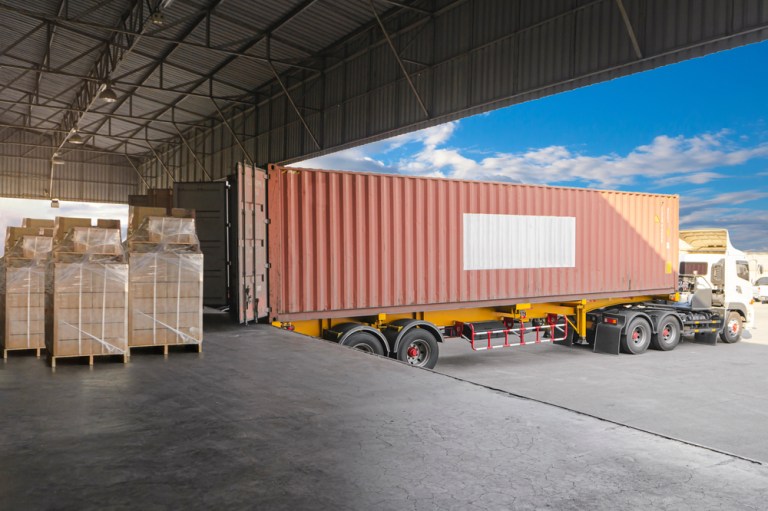
Customer expectations have been transformed by eCommerce, and logistics must keep up.
Whether it’s retailers trying to compete with Amazon’s delivery promises or manufacturers juggling global supply disruptions, logistics is now a game of precision, speed and convenience.
Wing, Alphabet’s on-demand drone delivery service, announced Tuesday (Oct. 1) that it partnered with autonomous sidewalk delivery firm Serve Robotics to expand autonomous last-mile food delivery.
“We’re excited to partner with Wing to offer a multi-modal delivery experience that expands our market from roughly half of all food deliveries that are within 2 miles of a restaurant to offering 30-minute autonomous delivery across an entire city,” Serve Robotics CEO and co-founder Ali Kashani said in a statement.
The existence of autonomous robot-to-drone delivery underscores how deeply the demands of the digital age have become. With online sales driving demand for quicker, more flexible supply chain solutions, the traditional point-A-to-point-B shipping model is becoming outdated.
Consumers want near-instant delivery, tracking capabilities and flexible return options. In response, businesses are pressured to provide more efficient and customer-centric solutions.
Read also: Embedded Finance and the Great Supply Chain Reset
Traditional supply chains were built to support bulk shipments, often from manufacturing hubs in Asia to consumer markets in North America and Europe. These supply chains operated on a predictable schedule, with goods moving through ports, warehouses and distribution centers over several weeks. However, the eCommerce boom has led to the rise of fragmented, omnichannel supply chains, where goods are often shipped directly to consumers, bypassing traditional distribution networks.
The shift made logistics — the management of the flow of goods from origin to consumption — a critical battleground. Logistics providers must now manage not just large-scale freight but also last-mile delivery, reverse logistics for returns, and the need for real-time visibility into every step of the journey.
“Decades of globalization have led to supply chains becoming increasingly complex,” Duncan Lodge, global head of supply chain finance and EMEA head of trade at Bank of America, told PYMNTS last month.
“[W]e need to focus on maximizing the interoperability of platforms so transactions can move seamlessly across different systems,” he added. “The ability to join the dots across different platforms will be key to driving further digitalization and unlocking the full potential of global trade.”
The PYMNTS Intelligence report “Middle-Market CFOs Tag Competitive Positioning Among Top Drivers of Uncertainty” revealed that concerns over supply chain integrity and macroeconomic conditions highlight how larger external factors remain on chief financial officers’ radars, particularly around the ongoing volatility in global trade being driven by geopolitical tensions.
For many companies, the days of relying on a handful of logistics providers to move goods through fixed channels are over. Instead, they are increasingly looking for integrated, tech-enabled solutions that allow them to respond quickly to changing demand, navigate supply chain disruptions and provide a better customer experience.
See also: How Digital Transformation Aligns Supply Chains With Compliance, Sanctions Risk
Across today’s operating environment, the entire supply chain needs to be fast, flexible and frictionless.
The integration of artificial intelligence, machine learning “and vast computing power, coupled with an abundance of data, has transformed our approach to demand forecasting, inventory flow and cost optimization,” Parvez Musani, senior vice president of end-to-end fulfillment at Walmart U.S. Omni Platforms and Tech, told PYMNTS in July.
“Customers who can count on you during challenging times will reward you with their continued business,” he added. “…Businesses must be able to adjust to disruptions quickly.”
In response to this environment, even traditional ocean freight giants like Maersk are betting billions on capturing a larger slice of the supply chain by integrating warehousing, customs brokerage, air freight and inland transportation services into their portfolios.
Maersk’s 2021 acquisitions of Visible SCM, an eCommerce fulfillment and parcel delivery company in the United States, and B2C Europe, a 20-year-old- European logistics company focused on business-to-consumer (B2C) parcel delivery services, reveal the company’s focus on strengthening its position in the growing eCommerce logistics market.
As eCommerce continues to reshape the global trade landscape, betting on logistics could be a game-changing move.
For all PYMNTS B2B coverage, subscribe to the daily B2B Newsletter.